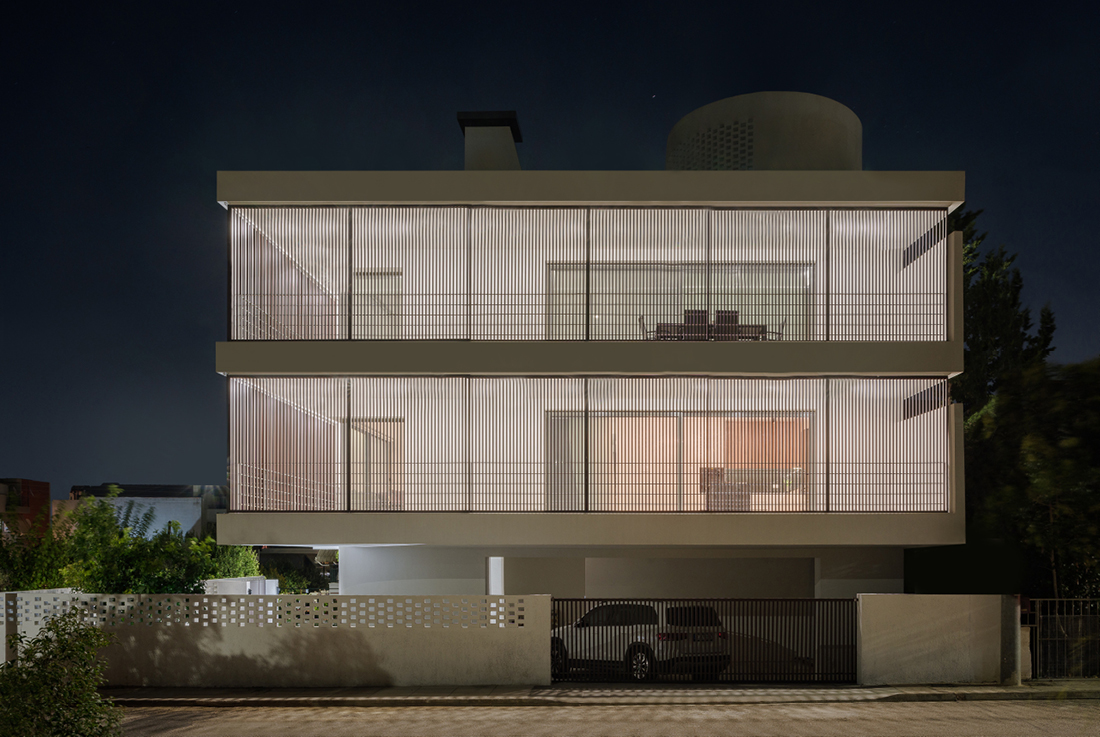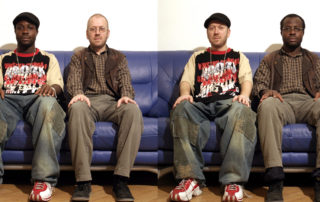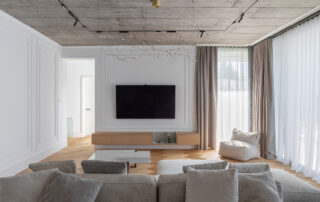Bicubic Residence is situated in Athens’ western suburban area, nestled on a relatively tranquil crossroad within a strictly residential neighborhood, boasting mild traffic. Comprising two primary volumes, it amalgamates into a unified structure, connected by the staircase volume, facilitating the transition between the living room and bedroom areas of each residence.
Two main curved bearing walls elevate the structure above ground level, while also extending a welcoming gesture to visitors, guiding them towards the main staircase area. The journey from the property’s entrance to the main door is enhanced by various spatial qualities, including a slender but expansive water feature with reflective properties, alongside a pebble-filled area on the right side, perfect for a swing or outdoor seating.
The roof follows the same curvilinear design principles, promoting user-friendliness and fostering a serene spatial ambiance. The facade is adorned with rows of wooden shaders, providing an ever-changing aesthetic and offering versatile shading options to cater to users’ preferences. These shaders can be adjusted to be fully open, partially closed, or completely shut, on one or both levels, adding a dynamic and playful aspect to the overall architectural impression.
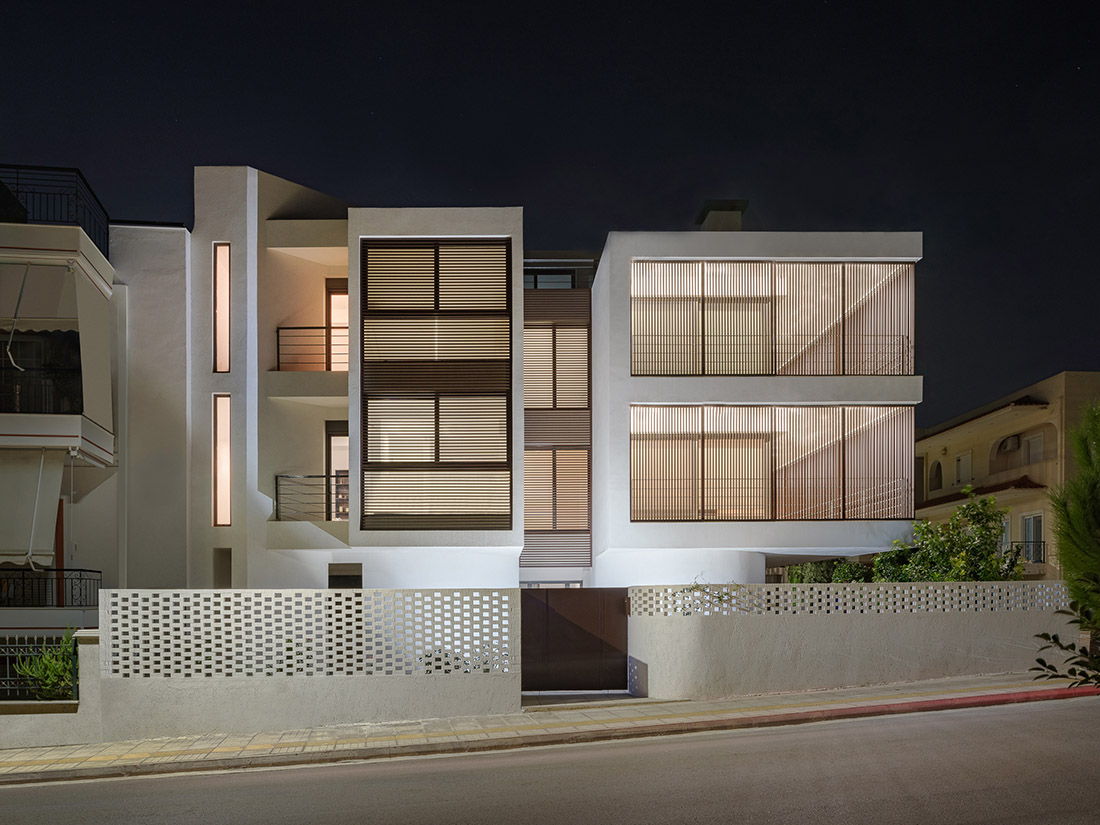
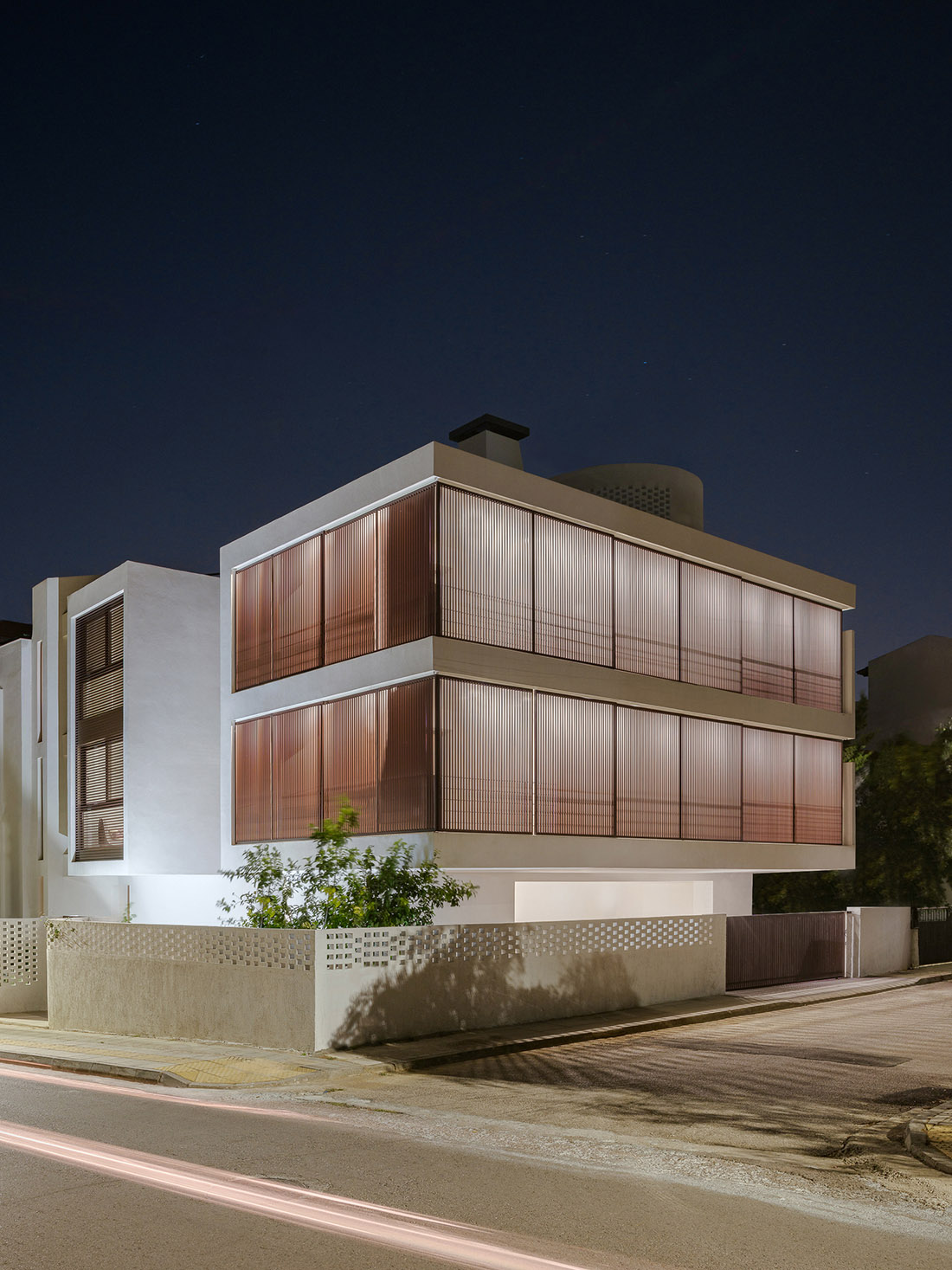
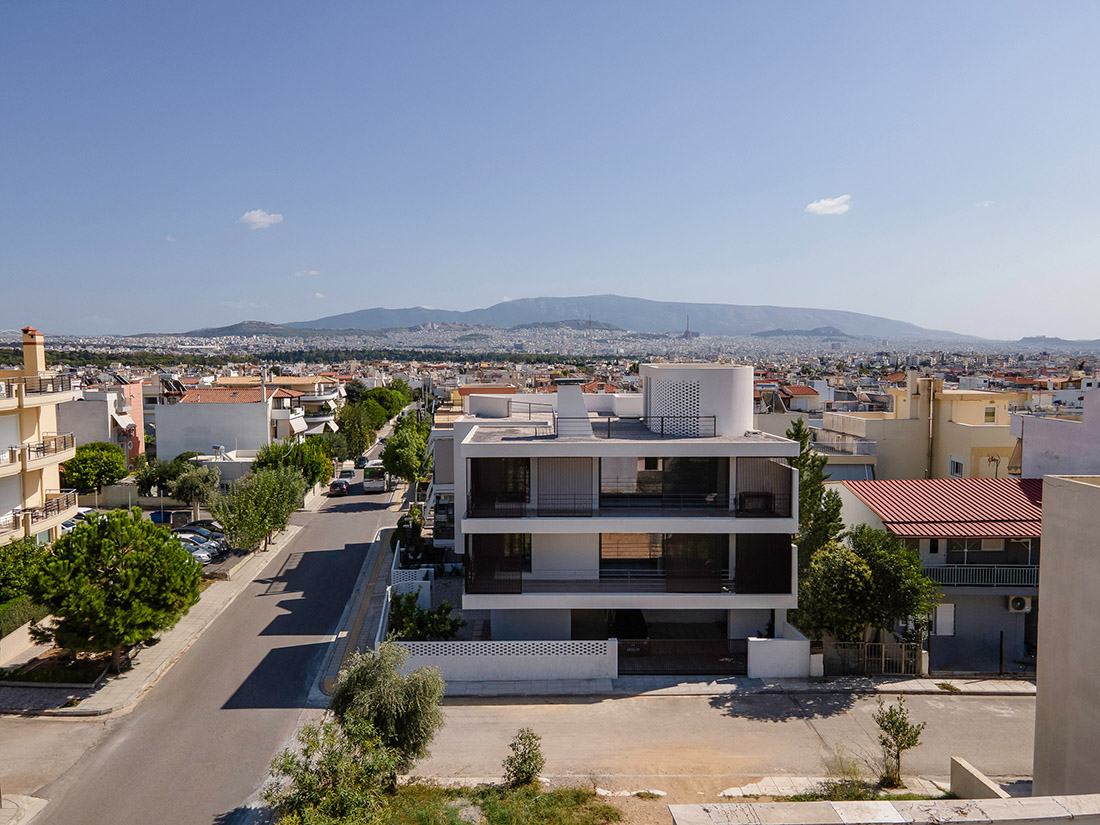
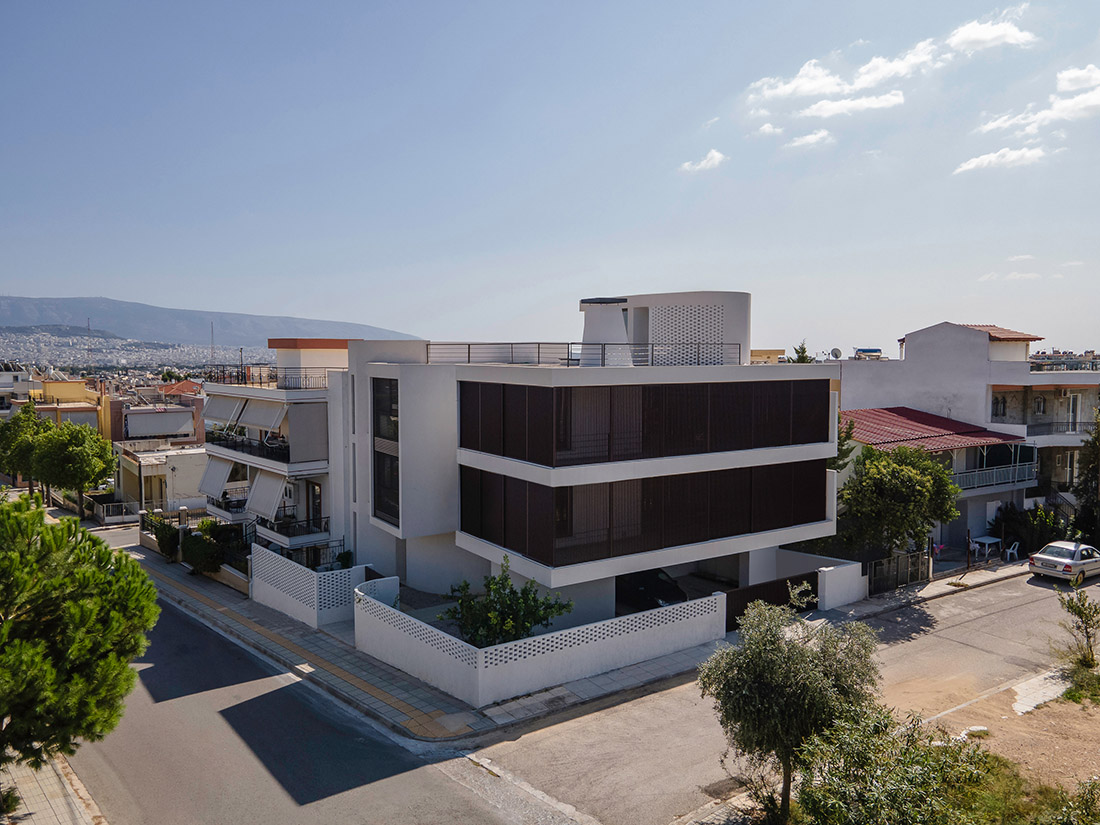
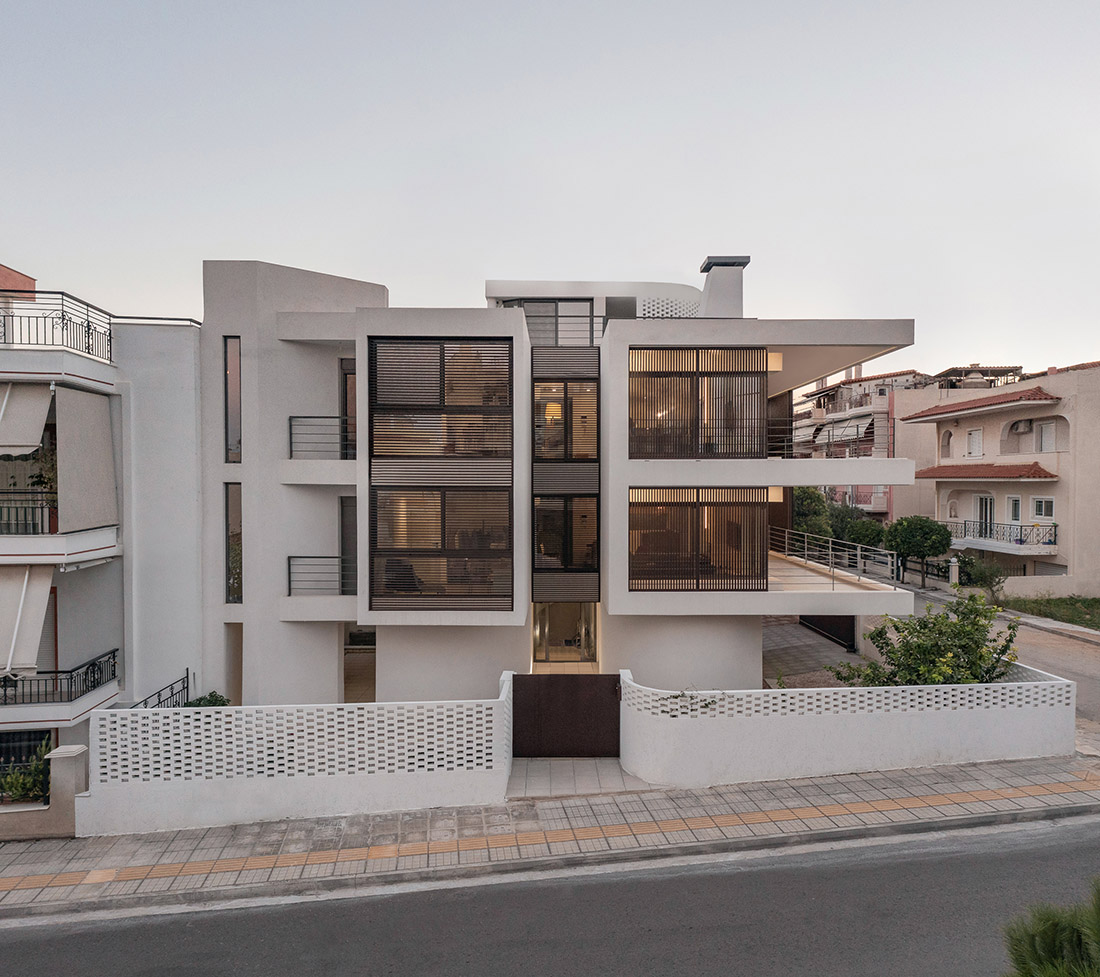
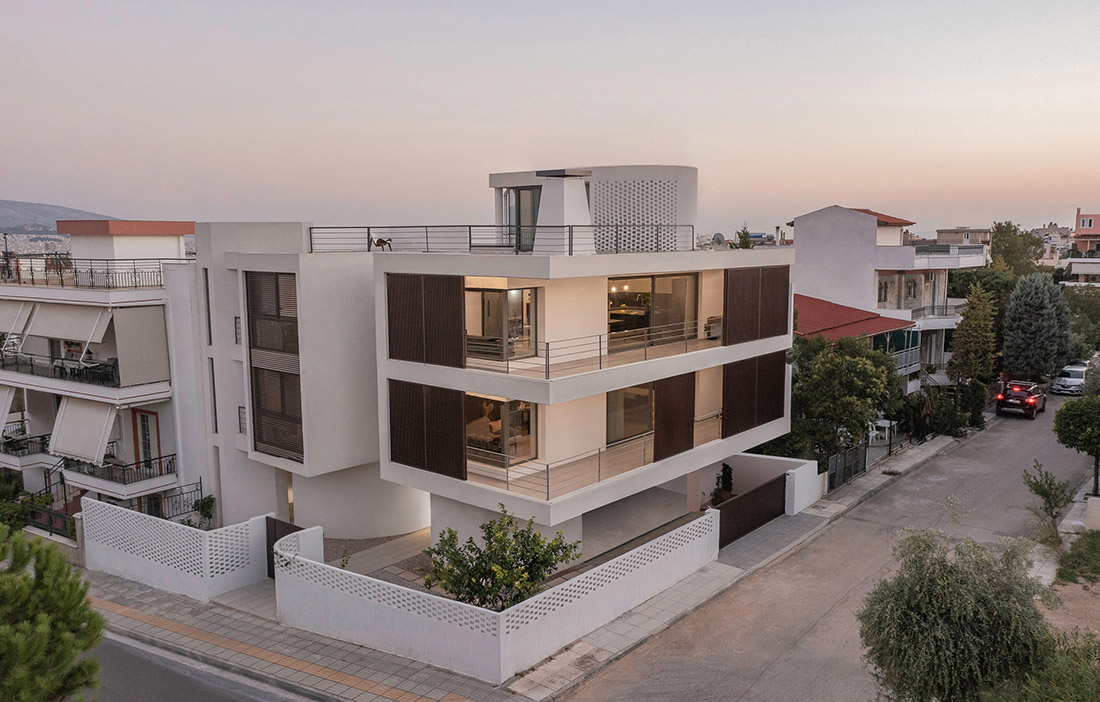
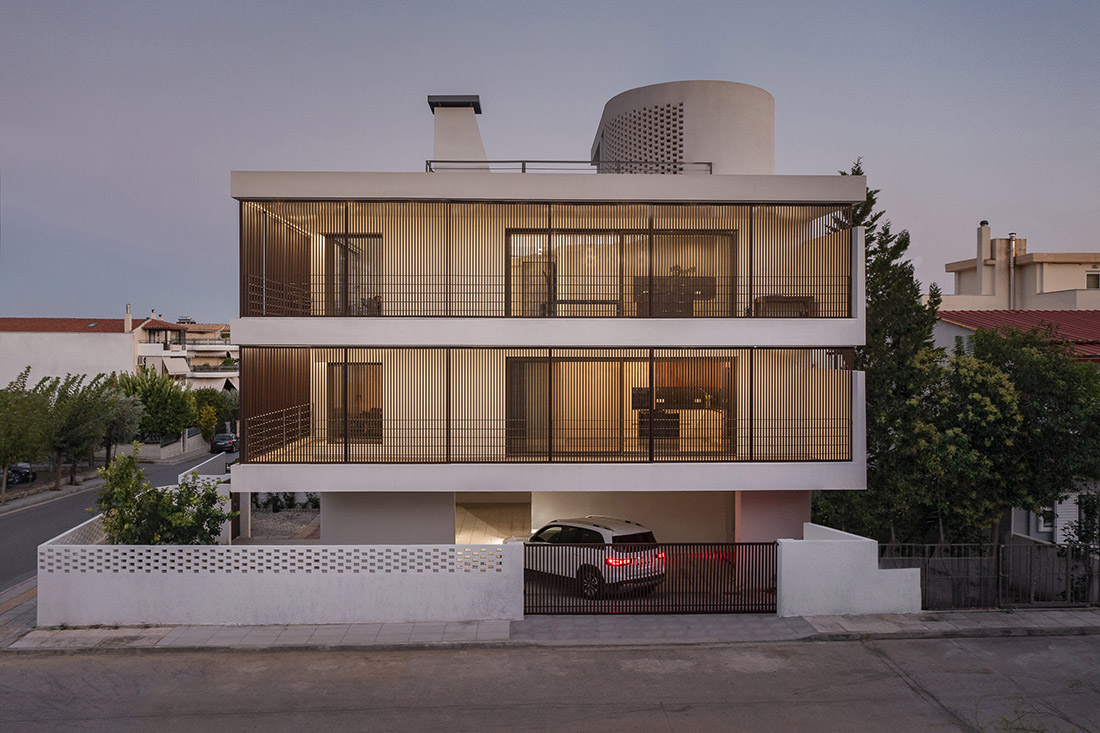
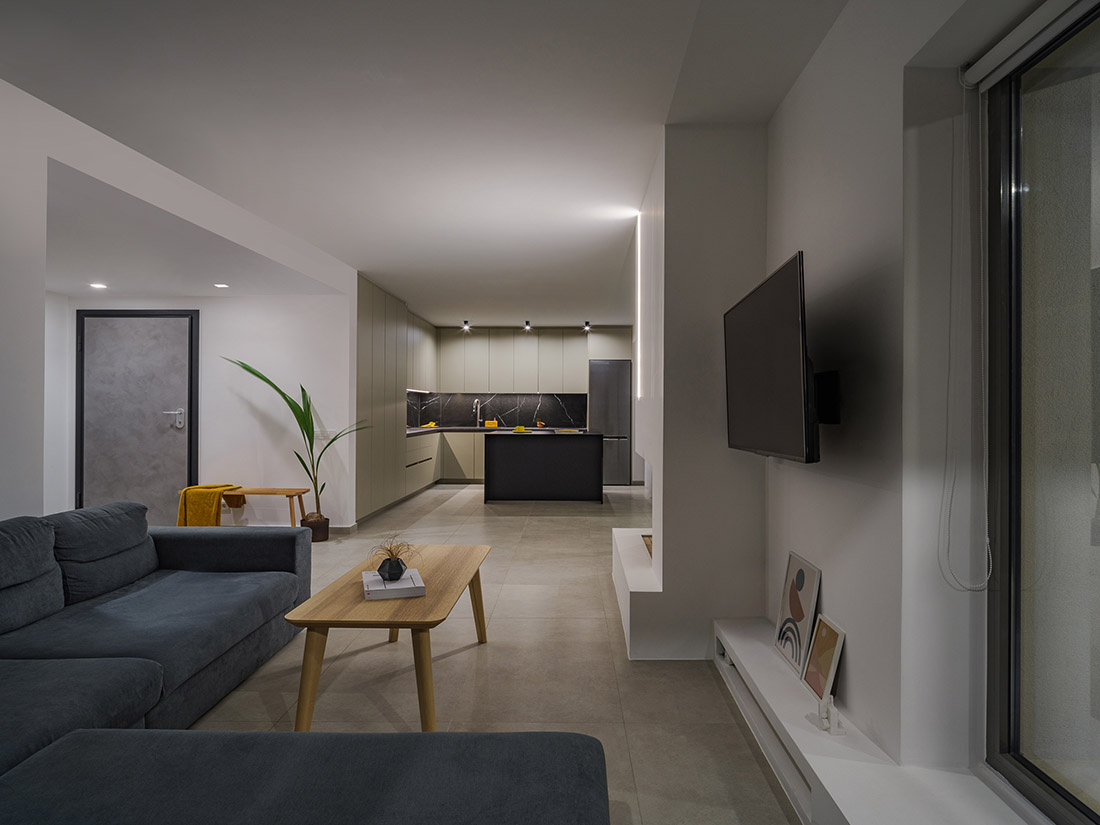
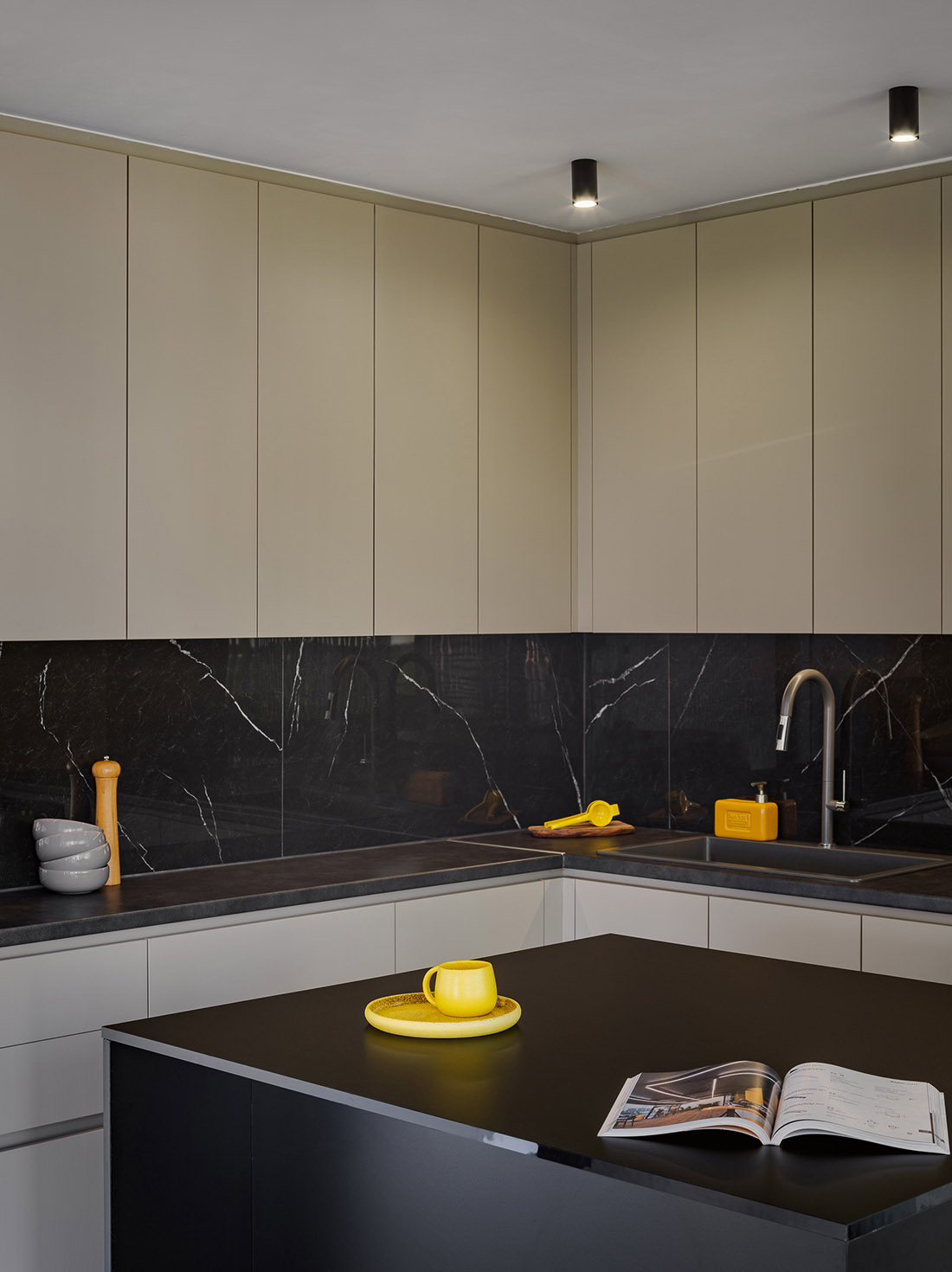
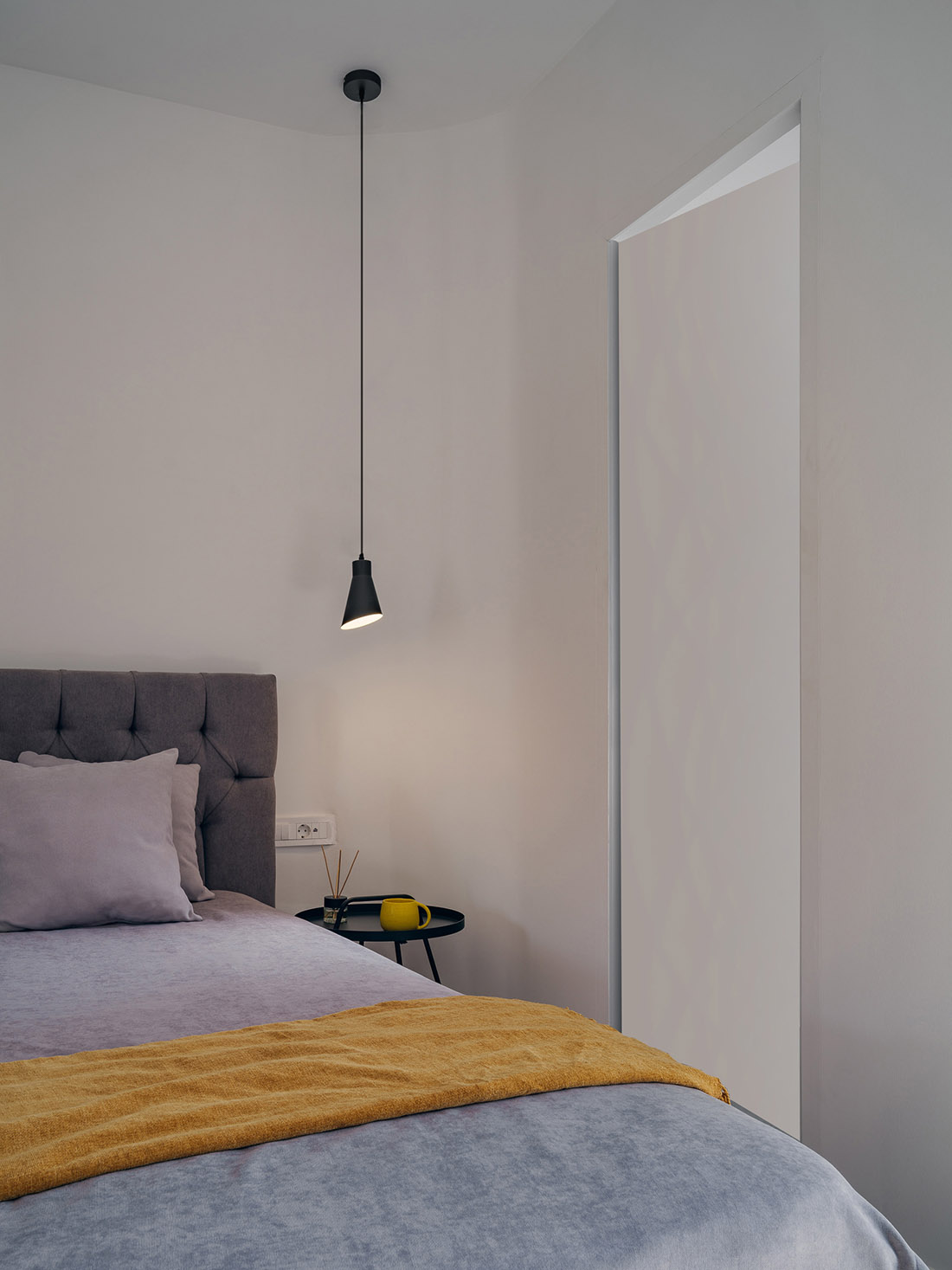
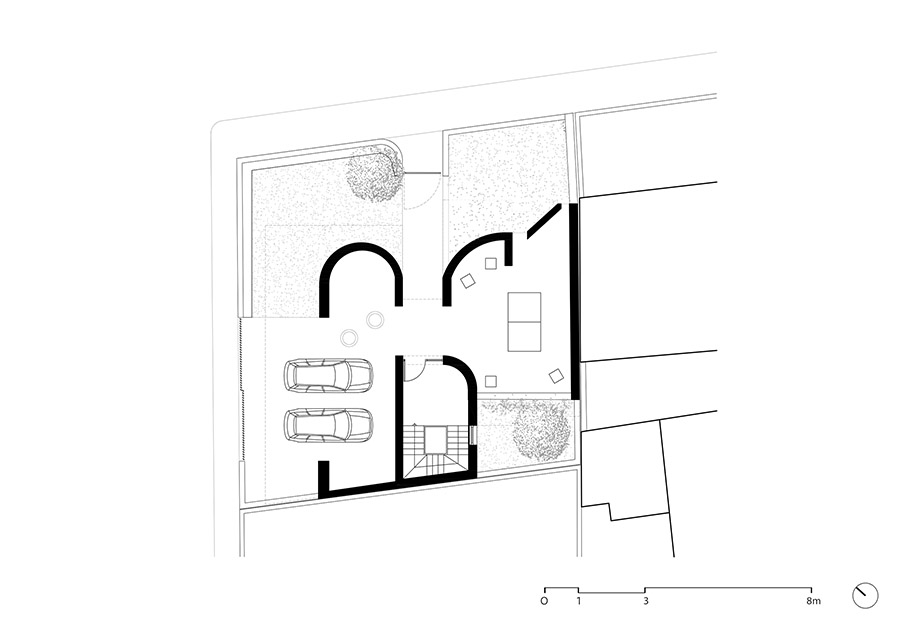
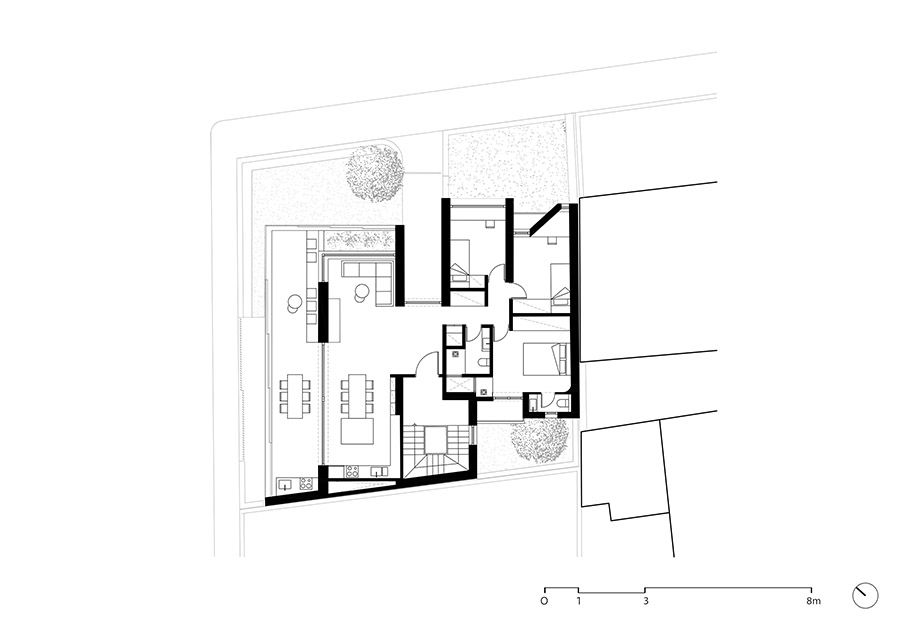
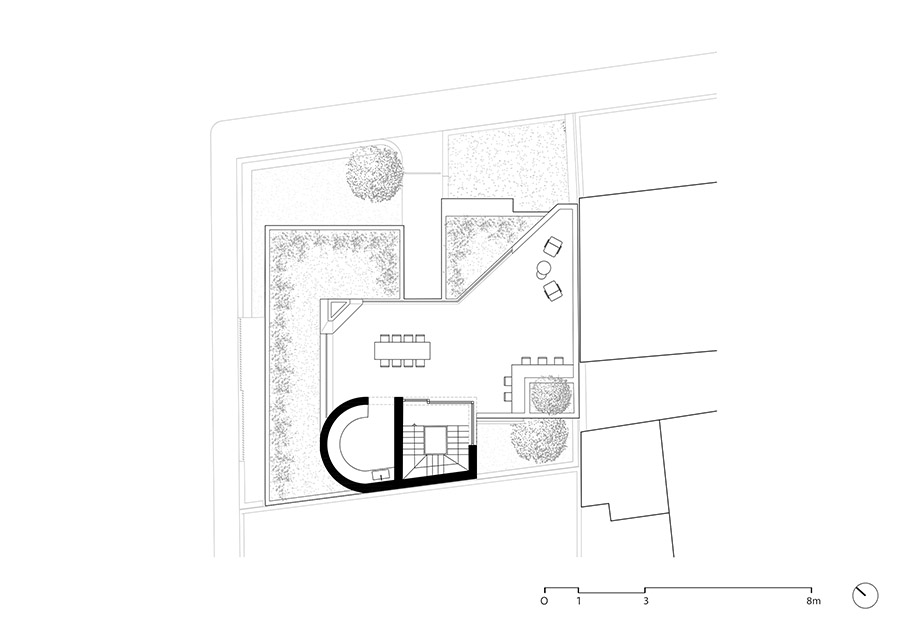
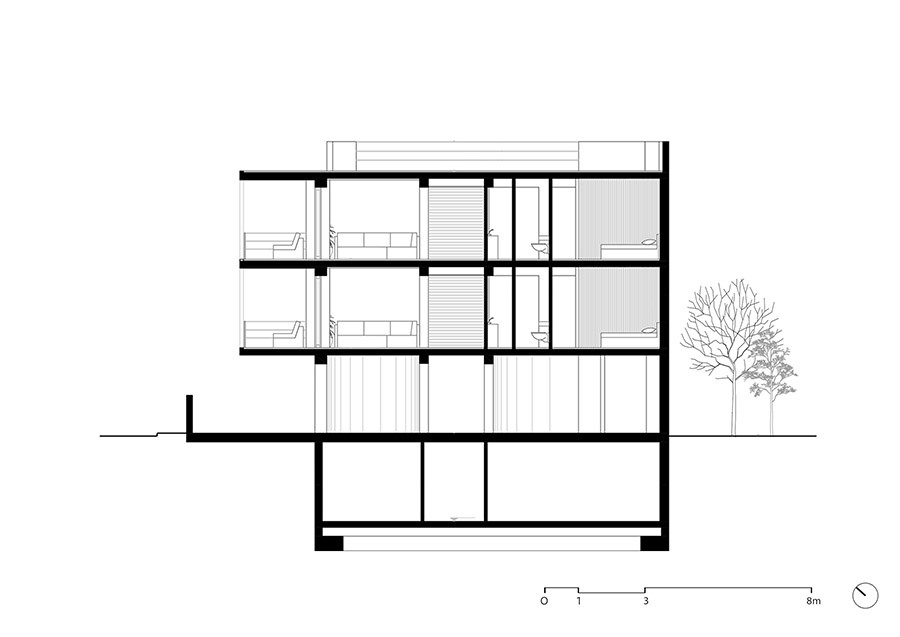
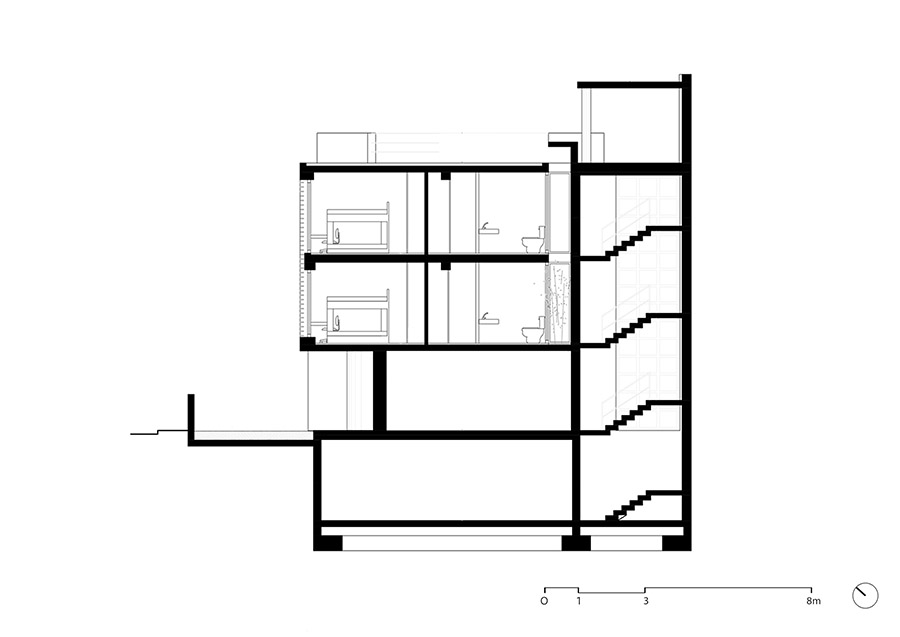

Credits
Architecture
The Hive architects; Michail Xirokostas, Theodore Panopoulos
Client
Markos Kostas
Year of completion
2023
Location
Kamatero, Attica, Greece
Total area
261 m2
Site area
220 m2
Photos
George Messaritakis
Project Partners
Civil engineer: Panagiotis Konstantopoulos
Electrical engineer: Antonios Togkas
Windoows and powder paints: Alumil, Portareto.gr
Elevation panels: Aluminco
Lights: Nikos Farogiannis
Floor tiles, furnishing and sanitary equipment: Kypriotis.gr
Concrete: Dimitris Papageorgiou, Anastasios Stamoulis
Wood constructions: Aggelos Gyftopoulos
Metal constructions: Evaggelos Daskalakis
Dry construction, insulation pnd paints: Giannis Agoras
Alarm systems: Fos Security
Plumbing applications and airconditioning system: Nikos Lazaridis
Electrical applications: Georgios Raftopoulos


